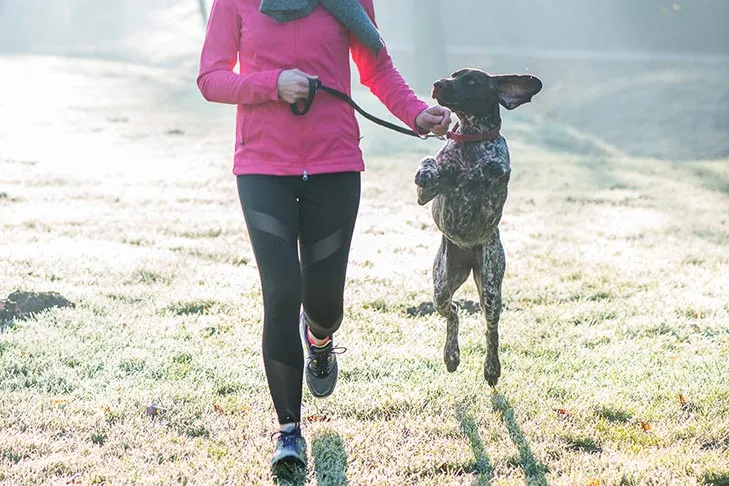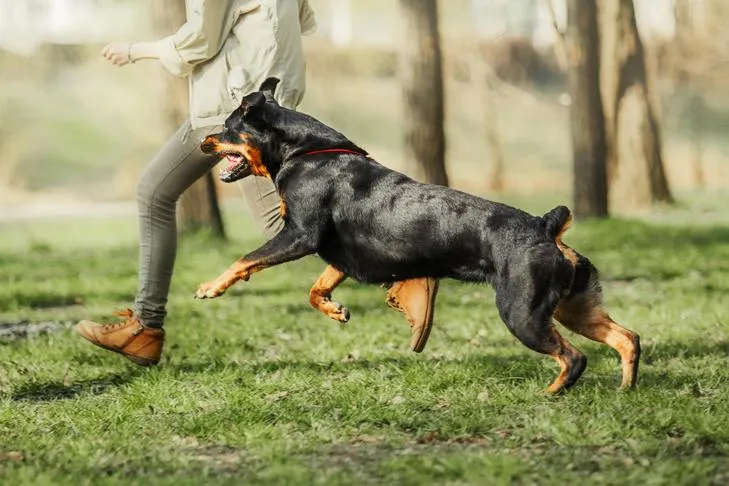Running with your dog is an incredibly rewarding experience, offering both of you a fantastic way to bond while staying fit. For many dog owners, finding a reliable running companion is a great motivator to maintain a consistent exercise routine. However, successfully teaching your dog to run with you requires more than just heading out the door. It involves careful preparation, foundational training, and a deep understanding of your dog’s capabilities. This guide will walk you through the essential steps on How To Teach A Dog To Run With You safely and effectively, transforming your furry friend into your ideal running partner.
Essential Considerations Before You Start Running
Before embarking on your running journey, it’s crucial to ensure your dog is physically prepared and suited for the activity. Not every dog breed or age group is ideal for long-distance running.
Firstly, assess your dog’s breed and age. While many breeds enjoy running, some are better suited for it than others. More importantly, puppies should not engage in strenuous running, as their bones and joints are still developing. It’s generally recommended to wait until your dog is around 1.5 years old for most breeds before starting a running program. Every dog has a unique temperament; some will naturally take to running more enthusiastically. Research your dog’s specific breed characteristics and, most importantly, schedule a visit to your veterinarian for a thorough physical checkup. This ensures that running is a safe and appropriate activity for your canine companion.
 A German Shorthaired Pointer runs alongside a woman on a paved path during an early morning jog.
A German Shorthaired Pointer runs alongside a woman on a paved path during an early morning jog.
Mastering Loose-Leash Walking: The Foundation
A strong foundation in loose-leash walking is non-negotiable before you begin to run with your dog. A dog that pulls on the leash during a walk can be frustrating, but the same behavior at running speeds becomes genuinely dangerous, risking falls for both of you. Remember that the outdoor environment is full of distractions and enticing smells. To encourage your dog to stay by your side with a slack leash (forming a ‘J’ shape), you need to be equally rewarding. Use high-value treats, favorite toys, and plenty of verbal praise to reinforce them for maintaining a loose leash.
Keeping your dog consistently on one side of you, whether left or right, is paramount for safety and control while running. If they run in front of you, lag behind, or weave from side to side, they can easily trip you or tangle the leash around your legs. Choose a side and stick with it. Start this training at a walking pace, always keeping reward placement in mind. If you want your dog on your left, always offer treats at your left leg to reinforce that desired position. Once they’ve mastered one side, you can teach them to run on the other with a distinct cue. Many runners also find a hands-free dog leash beneficial for comfort and control.
Introducing Speed Cues
Once your dog reliably walks politely at your side, it’s time to introduce cues for increasing speed. Just as you might use a cue like “let’s go” to indicate a change from pausing to walking, a specific running cue is essential. Phrases such as “get running” or “move it” can clearly signal to your dog that it’s time to pick up the pace. The more precise information you provide about your expectations, the better your dog will respond.
To teach the running cue, intersperse short bursts of jogging or running into your regular walks. Give your chosen running cue immediately before you accelerate, and then reward your dog generously as they quicken their pace to match yours. Similarly, you can establish a cue like “whoa” to signal a slowdown or a stop, reinforcing them when they respond appropriately. This clear communication helps your dog understand and anticipate changes in speed, making your runs smoother and more enjoyable.
Building Endurance Gradually
With your dog now understanding how to stay at your side and match your pace, the next step is to gradually build their physical conditioning. Just like humans, dogs need to develop strength and endurance over time to avoid injury and enjoy the activity. Begin by incorporating short intervals of running into your walks. For instance, run for a minute, then walk for five, repeating this sequence.
On each subsequent outing, progressively increase the duration of your running intervals while decreasing the walking segments. This gradual approach allows your dog’s cardiovascular system, muscles, and joints to adapt safely. After several weeks of consistent training, your dog will be better conditioned and able to comfortably run for longer distances alongside you. Patience is key to building a strong and healthy running partner.
 A happy Rottweiler runs through a grassy park, playing fetch with its owner on a sunny day.
A happy Rottweiler runs through a grassy park, playing fetch with its owner on a sunny day.
Tips for a Safe and Enjoyable Run
Even after your dog is well-trained and conditioned, several essential tips will ensure their safety and enjoyment every time you hit the trails together.
Always start your run with a warm-up period, walking for several minutes to prepare their muscles, and end with a cool-down walk. Be extremely mindful of weather conditions; dogs are far less tolerant of heat and humidity than humans. On warm days, stick to cooler times of day and shorter routes. Always carry water for both of you and offer it to your dog regularly throughout your run. Provide frequent breaks for your dog to rest, relieve themselves, and explore their surroundings briefly. Off-leash running should only occur in safe, legal areas and only if your dog has an absolutely reliable recall, even with distractions present. Lastly, constantly observe your dog for signs of fatigue or distress, such as excessive panting, lagging behind, or seeking shade. Dogs often try to please their owners, so they might push themselves even when they need to stop.
Conditioning in Extreme Weather
Dedicated runners might brave various weather conditions, but sometimes it’s simply too cold or too hot for your dog to safely run outdoors. During such extreme weather, you can still maintain your dog’s physical conditioning with indoor exercise. Depending on your dog’s size, a spirited game of fetch down a long hallway or up and down carpeted stairs can elevate their heart rate and work their muscles. You can also create an indoor obstacle course using household items like hula hoops or cardboard boxes, turning exercise into a fun mental and physical challenge. Many dog training facilities offer indoor agility classes, which provide an excellent way for your dog to run, jump, and stay active.
Another effective indoor option for some dogs is treadmill training. While specialized dog treadmills exist, your own human treadmill can work if the ramp length is suitable for your dog’s size. The larger the dog, the longer the treadmill deck they will need. Although it’s a convenient indoor workout, never just place your dog on a treadmill and expect them to know what to do. Research proper treadmill training techniques or consult a professional dog trainer to ensure your dog learns to use the machine safely and enjoyably. Crucially, never tie your dog to a treadmill or leave them unsupervised while using it.
 A Beagle on a leash runs beside a woman on a dirt trail, enjoying an outdoor exercise.
A Beagle on a leash runs beside a woman on a dirt trail, enjoying an outdoor exercise.
Conclusion
Building a strong bond with your dog through shared activities like running is incredibly rewarding. By carefully considering your dog’s suitability, establishing foundational loose-leash skills, introducing clear speed cues, and gradually building their endurance, you can successfully teach a dog to run with you. Remember to prioritize safety by warming up, staying hydrated, being mindful of weather, and recognizing signs of fatigue. With patience, consistent training, and attention to their well-being, your dog will transform into the perfect running companion, ready to share countless miles of adventure and companionship.
